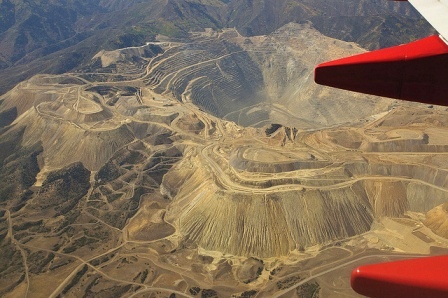
Only you can decide the level of risk you can tolerate and how much patience you have to sit while developments, the story, plays out.
The most upside (and by far the greatest risk) comes from buying a junior when they are exploring and make an initial discovery. Great drill assay results can send a juniors share price skyrocketing. The reverse can also be true. Junior explorers, the green field plays, are the riskiest plays by far. Strike out on assay results and it could be goodbye to a share price rise for a very long time – till the company finds another project they can work on. If you’re buying into this kind of play make sure the company has another fallback project in its portfolio.
My favorite stage junior is a junior in the post discovery resource definition stage (also known as brown field stage companies). These companies have all ready found something, the share price has settled back after the initial discovery and the company is going in to see what they have and hopefully produce a 43-101 compliant resource estimate and build upon it. The risk has been greatly reduced, the waiting time for a discovery non-existent and the reward very nice considering the much lower amount of risk.
For nearer term producers – for those further down the development path towards a mine – you have:
- Preliminary Economic Assessment (PEA) or scoping studies are done to examine potential mining scenarios and economic parameters – A PEA or scoping study is an important milestone for a mineral project, it’s the first step in a company’s economic and technical examination of a proposed mine
- Preliminary feasibility studies or pre-feasibility studies are more detailed than PEA’s and are used to determine whether or not to proceed with a detailed feasibility study. They are also used as a reality check to determine areas within the project that require more attention
- Feasibility studies will determine definitively whether or not to proceed with the project. A feasibility study or bankable feasibility provides budget figures for the project and will be the basis for raising capital to build the mine
Remember all these different stage studies are only yes/no decisions on whether to move to the next stage. NONE of them mean you are going mining, there’s no mine till every stage is completed, permits approved and the necessary financing has been arranged.
Because these companies are well advanced along the development path a lot of the guesswork about grade, size, costs and metallurgy have been taken out of the equation for us. They have done sufficient work to give investors a certain level of confidence that their project will successfully move towards being a mine.
The later stage companies (those doing feasibility, permitting and money raising) can have an excellent entry point for investors – they often enter a quiet period when they are doing the advanced studies and raising money to go into production. They often base (a flat share price) for quite a while through this period – possibly a good time for accumulation of their shares if you believe in the story. After the money is raised for production investors can see they are going mining – cash flow is just over the horizon – and the share price will often break out of its trading range.
With producers you have to look at the balance sheet, consider their plans for the future and judge for yourself the ability to meet those plans.
Remember cash flow is king, but can they grow that cash flow? These large well established producers have the least risk and the least upside. But gains could be steady and maybe they pay a dividend.



 Follow us on Twitter
Follow us on Twitter Become our facebook fan
Become our facebook fan










Comments are closed.